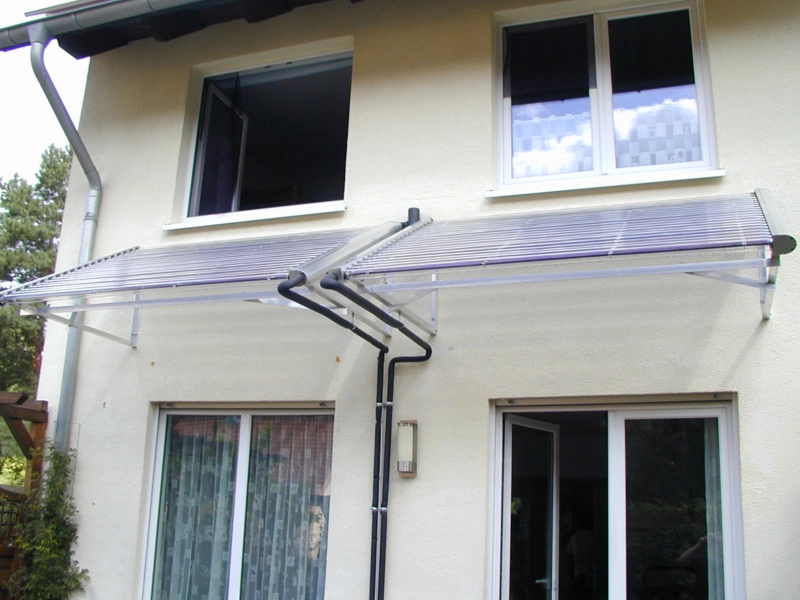-
-
Service & Garantien
Service & Garantien

The use of renewable energy, such as solar energy, is an important topic today in all sectors. There are various technologies that can be used to harness solar energy. These include solar thermal systems and photovoltaic systems.
Solar thermal systems use solar energy to generate heat. This heat can then be used for space heating or domestic hot water production. In industry, solar thermal systems are also used for process heat generation, solar cooling, or for supplying district and regional heating networks.
Photovoltaic systems, on the other hand, convert solar energy directly into electricity, which can be immediately consumed, fed into the public grid, or stored for times without sunlight.
Both technologies are used in private homes and in industry and commerce. Depending on where the higher energy consumption lies, one must choose the most effective system. Alternatively, one can simply install both a solar thermal system and a photovoltaic system, optimizing the available space for their needs.
Solar thermal systems require very little space on the roof or facade to supply a household with heat for water and heating. By using full-vacuum tube collectors, high yields can be generated even in diffuse light during autumn and winter. These collectors operate independently of outdoor temperature and are very flexible in their installation options. The tubes can be rotated individually within the collector and aligned optimally to the sun, compensating for areas that are not perfectly south-facing. Photovoltaic systems, on the other hand, require optimal southern exposure to generate as much energy as possible.
Compared to a photovoltaic system, a solar thermal system requires significantly less space to achieve similar yields. Additionally, the heat is stored directly in a tank, ready for use when needed. Depending on the type of building, solar thermal systems can save up to 50% of energy costs, with passive and low-energy houses even achieving higher savings.
In conclusion, utilizing solar energy is an important step towards a sustainable energy supply. By using thermal solar systems and photovoltaic systems, both private households and industries can effectively reduce energy costs and contribute to environmental protection. The use of free solar energy is thus an effective way to save energy and reduce CO2 emissions.
AKOTEC Solar Thermal